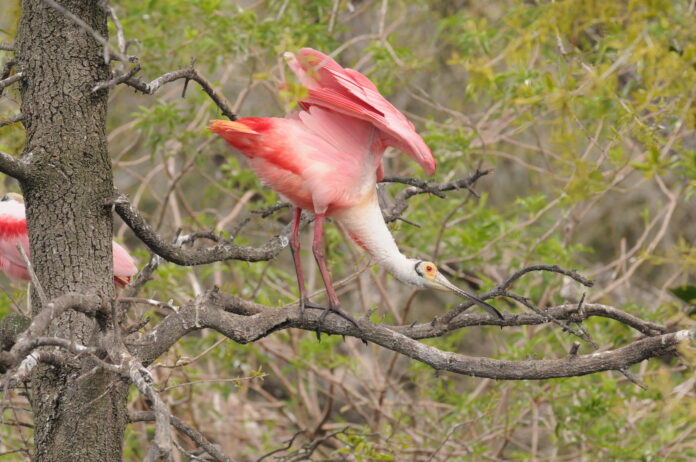
Despite growth and intense development in Volusia County over the past several decades, larger chunks of land in the county remain in their natural state — and leaders and their constituents want to keep it that way.
Residents say they want to protect even more wilderness from the ravages of urbanization, and those wishes are shaping land policy.
“Everyone is wildly in favor of the wildlife corridor,” County Council Member Heather Post said. “The resources that we have are unlike any other county.”
While most of the county’s land-preservation efforts have been concentrated in the center of the county — forming a sort of large north-to-south spine of acreage virtually unchanged since the days of the Spanish conquistadors — parcels on the west side along Lake George and the St. Johns River and in southeast Volusia are also now in public ownership and thus safeguarded against development. Many of the conservation lands are connected
“It’s a smart-growth strategy, as well,” county Resource Management Director Brad Burbaugh said.
Environmental proponents say a convergence of factors make now the time for enlarging the county’s Wildlife Conservation Corridor:
One sign that public sentiment is pro-preservation is the renewal of the Volusia Forever program in 2020 by an overwhelming majority of 75.55 percent of county voters.
Volusia Forever is the county’s program of acquiring environmentally sensitive lands, first adopted by referendum in 2000, and renewed in the Nov. 3, 2020, general election.
Volusia Forever is actually an amendment of the county’s charter. It provides for the levy of a special property tax of 1/5 of a mill — 20 cents per $1,000 of taxable value — to generate revenue to purchase endangered land and protect it from development. With the value of Volusia County’s tax base at $42.7 billion currently, the program stands to bring in about $8.54 million a year.
In some instances, the county leaves the land in private ownership and allows it to be farmed, but buys the development rights.
A special panel of nine members appointed by the County Council reviews proposals to buy the land of willing sellers or to compensate them for not developing it and makes recommendations to the County Council, which must approve the purchases.

THOU SHELL CLEAN UP THE WATERWAYS
— Kelli McGee, an attorney specializing
in environmental law, strings paper discs across the speaker’s podium as she urges the Volusia County Council not to neglect
waterfronts in the march to preserve wildlife habitat. McGee said each paper disc “represents 13,000 baby clams” seeded in the Indian River Lagoon to help clean the waters.
The advisory group, whose first meeting of 2022 is set for Jan. 26 (see sidebar), will be busy. Volusia Forever 2.0 has already received 26 applications from landowners willing to sell. Those applicants have a combined ownership totaling 10,872 acres.
The state’s land-acquisition program known as Florida Forever has identified 18 million acres of wildlife corridors throughout Florida, and 10 million of those acres have now been placed in conservation.
The Florida Legislature last year enacted, and Gov. Ron DeSantis signed, the Wildlife Corridor Act. The law “appropriates $300 million in funding to protect interconnected natural areas in the state,” notes a Volusia County memorandum.
Funding for the state’s land purchases, which may be combined with local land-buying efforts around the state, comes from the American Rescue Plan Act passed by the Congress and signed by President Biden last year.
That measure, often referred to as ARPA, for short, was a stimulus bill that gave $1.9 trillion to state and local governments for economic recovery from the coronavirus pandemic.
“If we put money into the acquisition, the state will hold the title,” Burbaugh said.
Whichever level of government ends up actually owning the land, the move to acquire and preserve undeveloped land is broad-based. County Chair Jeff Brower, who endorsed the renewal of Volusia Forever in 2020, said the saved land gives us clean water to drink and space for recreation.
Dr. Wendy Anderson, chair of the Volusia Soil and Water Conservation District and a professor of environmental science at Stetson University, urged the council to do more to protect the wild lands of the county and Florida.
“I challenge you to do something great during the remainder of your service on this County Council,” she said. “I challenge you to acknowledge that every acre in Volusia County from river to sea is a wildlife corridor.”
Amid the euphoria for keeping portions of Volusia County and Florida wild and undeveloped, a cautionary note was sounded. The County Council was reminded that the acquisition of privately owned land comes with a cost.
“You are taking land off the tax rolls,” John Nicholson, of Daytona Beach, told the elected officials.
County Council Vice Chair Barb Girtman asked the county staff to provide information on how the purchases of environmentally sensitive lands by the county or the state would impact the tax base.
In addition, Council Member Danny Robins said he wants to know how buying more private land will affect property rights.
“I’d like to have a clear definition of landowners’ rights,” Robins said. “I want the full story … the impact of increasing the size of government and the cost.”
After briefly mentioning the possibility of changes in the county’s land-development regulations, the council agreed to convene a workshop on growth management April 12.